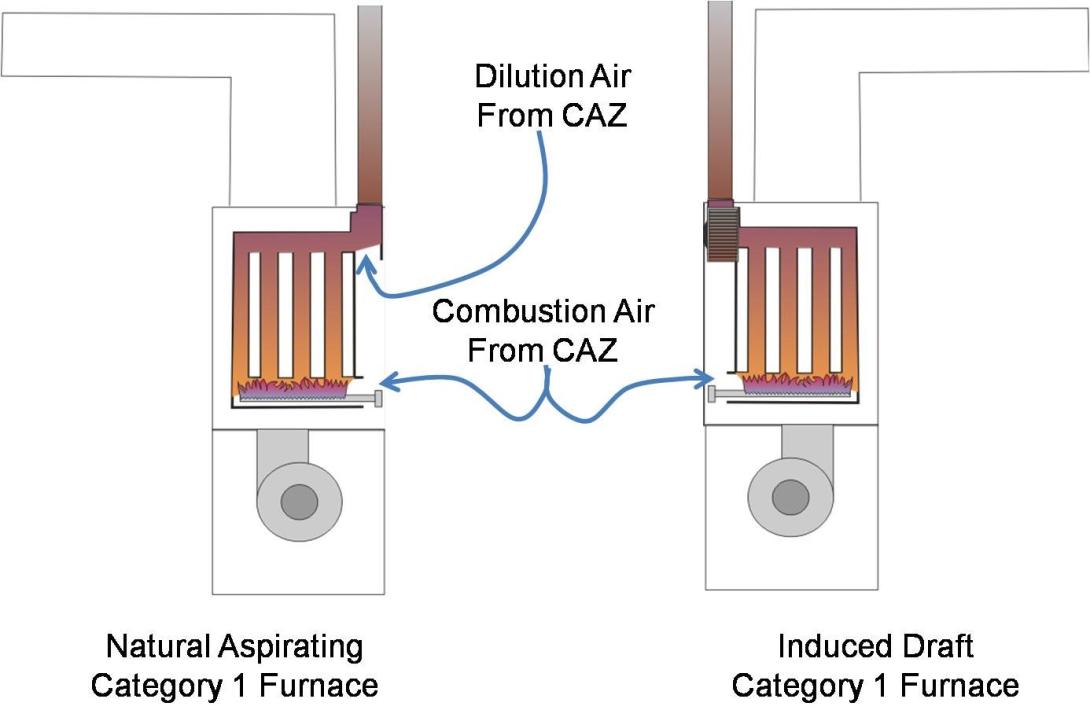Curriculum
-
Remember
- What is combustion safety, and what are three good practices to ensure combustion safety for gas-fired natural draft appliances?
- Know the widely adopted fuel gas codes.
- Define key combustion safety terms and know the different categories of vented gas-fired appliances.
: Combustion Safety - RememberLecture Notes
: Combustion Safety - Problem Set 1.2Problem Set
: Combustion Safety - Problem Set 1.3Problem Set
-
Understand
- Understand the main approaches to evaluating combustion safety.
- Understand the harmful effects of CO spillage and what can be done to prevent backdrafting of CO.
: Combustion Safety - UnderstandLecture Notes
: Combustion Safety - Problem Set 2.1Problem Set
: Combustion Safety - Problem Set 2.2Problem Set
-
Apply
- What is the difference between testing for combustion safety under the worst-case scenario, and the normal operation scenario?
- Understand how to calculate the volume of indoor air required for safe combustion and ventilation of natural draft appliances using indoor air.
- Understand how to perform a combustion safety analysis on natural draft appliances that use indoor air and make upgrades to these combustion systems.
- Understand how to perform a combustion safety analysis on natural draft appliances that use outdoor air and make upgrades to these combustion systems through appliance zone isolation.
- What should be done if significant levels of CO are detected in the ambient air of the building or in the appliance's flue gas during a combustion safety test?
: Combustion Safety - ApplyLecture Notes
: Combustion Safety - Problem Set 3.1Problem Set
: Combustion Safety - Problem Set 3.2Problem Set
: Combustion Safety - Problem Set 3.3Problem Set
: Combustion Safety - Problem Set 3.4Problem Set
: Combustion Safety - Problem Set 3.5Problem Set
-
Analyze
- Understand the remediation options available for making home combustion safe for indoor air appliances.
: Combustion Safety - AnalyzeLecture Notes
: Combustion Safety - Problem Set 4.1Problem Set
Teaching Materials

HVAC CAZ Testing Overview
Combustion appliance zone (CAZ) testing is required for atmospherically vented, or Category I, combustion appliances. These appliances rely on surrounding air for combustion. CAZ testing, which is performed by a certified rater, ensures that combustion appliances are working properly and that there is adequate room volume to ensure clean combustion.
To ensure safe and efficient operation of Category I furnaces, boilers, and water heaters, it is critical to provide the correct amount of combustion and dilution air. Ideally, this air should come from outdoors, but it is also legal for combustion air to come from the combustion appliance zone, or CAZ, provided there is enough air volume.
Atmospherically vented (aka Category I) appliances must have two fresh air supply ducts or openings installed to provide combustion air in the combustion appliance zone (CAZ). If the appliance is installed in an enclosed room, there are five possible configurations for bringing in adequate air (see slide). In any case, a certified rater must conduct a combustion safety test to verify that all combustion appliances are working properly and not venting dangerous gases into the living space.
